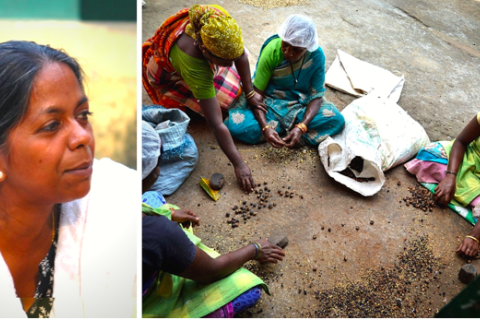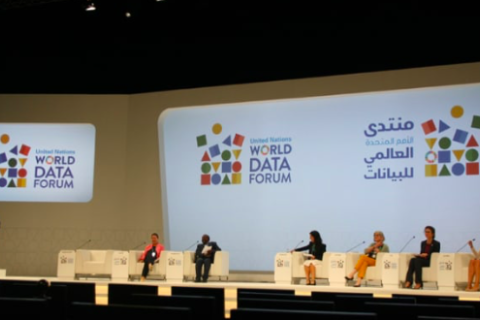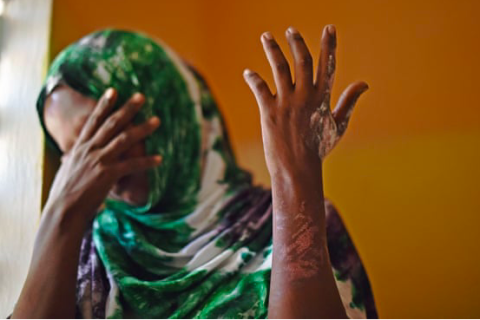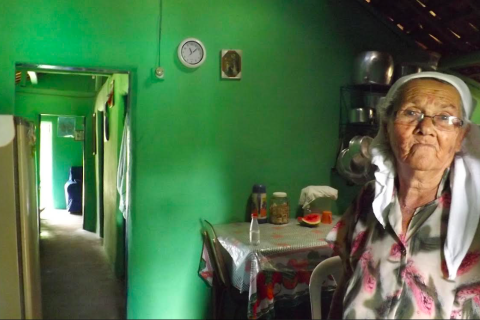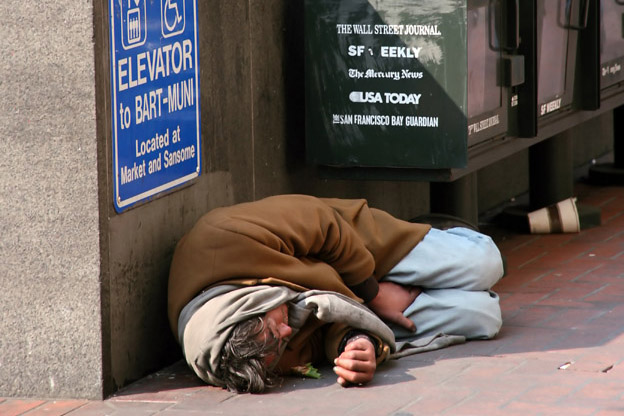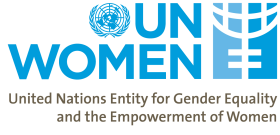
Proportion of countries where the legal framework (including customary law) guarantees women’s equal rights to land ownership and/or control
Last updated on 1 February 2022
This indicator is currently classified as Tier II. The Food and Agriculture Organization of the United Nations (FAO) is the main Custodian agency. UN Women and the World Bank are partner agencies.
Unit of measure: Articles present in primary and/or secondary legislation.
Why is this indicator important?
According to UN Women, "deep legal and legislative changes are needed to ensure women's rights. Stark gender disparities remain in economic and political realms." Discriminatory laws need to be reformed if women and girls are to be empowered with secure, equal rights to land. It will help women and girls achieve power and potential, secure food for their families, generate income, and sustain other livelihood needs. This includes both statutory and customary law. Together with 5.a.1, this indicator encourages countries to review and, where necessary, to strengthen existing policy and legal measures aimed at securing equal rights to land for women and men.
How is the indicator measured and monitored?
SDG indicator 5.a.2 measures the extent to which a country’s legal framework supports women’s ownership and/ or control over land including inheritance rights for women and girls. Progress towards the SDG target will be determined by the extent to which countries have incorporated internationally recognized standards, particularly from the Voluntary Guidelines on Responsible Governance of Tenure (VGGT) and the International Convention on the Elimination of Discrimination against Women (CEDAW), into their legal frameworks. Existing statutory laws are assessed against the six following proxies:
Proxy A: Joint registration of land compulsory or encouraged through economic incentives
Proxy B: Compulsory spousal consent for land transactions
Proxy C: Women’s and girls’ equal inheritance rights
Proxy D: Allocation of financial resources to increase women’s ownership and control over land
Proxy E: In legal systems that recognise customary land tenure, existence of explicit protection of the land rights of women
Proxy F: Mandatory quotas for women’s participation in land management and administration institutions
According to the metadata document, the legal and policy framework encompasses the Constitution, primary and secondary legislation as well as existing policies. Control over land is defined as the ability to make decisions over land, its usage and benefits. In addition to legally acquired land, land ownership in systems where land is owned by the state refers to long-term leases, tenancy, or use rights, to name but a few. The indicator also considers customary legal systems that have been recognised by the state and regulated in national law. It also takes into account the rights of partners in consensual unions when the legal framework recognises such unions.
Data sources include publicly available legal instruments on land (including land registration), family, marriage, inheritance, and gender equality. Only the proxies found in the legally binding primary and secondary legislations are considered in the reporting, but the methodology encourages countries to also review bills, and policies to monitor progress against the 6 proxies. Once the legal assessment is completed, the officially designated national institution(s) responsible for SDG indicators submits a reporting questionnaire to FAO for a quality check, to ensure that the assessment was carried out in accordance with the reporting methodology. Once the process is completed, the national institution officially submits its report to FAO. In 2019 and 2020, 36 countries have reported on this indicator.
As this is one of the few legal indicators in Agenda 2030, one of the key challenges in the reporting lies with the identification of national institutions responsible for SDG indicator 5.a.2. Owing to the nature of this indicator, FAO recommends the nomination of high-level focal points within institutions with a mandate on land, agriculture, justice or gender equality. The responsible institution(s) for SDG indicator 5.a.2 should then nominate a legal expert to carry out the assessment in accordance with the reporting methodology. Another methodological challenge concerns the assessment and computation of heterogenous customary tenure systems.
By Anne Hennings, peer-reviewed by Naomi Kenney, FAO; Martha Osorio, FAO; Everlyne Nairesiae, GLII Coordinator at the Global Land Indicators Initiative (GLII) at GLTN, Un-Habitat and Clinton Omusula, Land Data and Knowledge Management Specialist at the Global Land Indicators Initiative (GLII) at GLTN, UN-Habitat.
Official indicator data
The indicator “measures” the level to which a country’s legal framework supports women’s land rights, by testing it against six proxies drawn from international law and internationally accepted good practices. Currently, data is only available for proxy E: In legal systems that recognise customary land tenure, existence of explicit protection of the land rights of women. It is given on a scale from 1 to 6, where: 1 - there is no evidence of guarantees of gender equality in land ownership and/or control in the legal 6 - highest levels of guarantees of gender equality in land ownership and/or control in the legal framework * Select "year" below to see the most recent data for more countries.
Other related indicators on Land Portal
In addition to the official indicator data, the following indicators provide information concerning women’s tenure security, land rights, and access to land.
For 26 Years, This Woman Has Been Helping Nilgiris Tribals Stand For Their Rights
After dedicating 26 years to creating a harmonious balance between nature, humans and technology, social worker Snehlata Nath, still feels that it is just the beginning.
Recipient of the prestigious Jamnalal Bajaj Award for Application of Science and Technology for Rural Development in 2013, she has been extensively working in the field of eco-development, livelihood, and sustainability in rural tribal areas of the Nilgiri Biosphere Reserve.
Making the invisible visible: Insights from the UN World Data Forum
Making the invisible visible within national data systems was an important area of discussion at the United Nations World Data Forum. Invisible population groups in data are commonly the most vulnerable populations — women and girls, people with disability, refugee and migrants, and the elderly.
'No world to leave our children’: progress on women's rights still lags, shows study
Progress on women’s rights has been far slower than expected across the world as a report shows underage marriage rates have barely come down this decade, while dozens of nations still legally prioritise men.
Forty-one countries recognise only a man to be the head of the household; 27 countries still require that women obey their husbands by law; and 24 countries require women to have the permission of their husband or a legal guardian (such as a brother or father) in order to work.
Entre a Lei e a Realidade: entendendo os direitos das mulheres à terra no Brasil
Uma entrevista com Patrícia Chaves, da organização brasileira Espaço Feminista, explica as discrepâncias no acesso à propriedade e aos direitos de herança por mulheres no Brasil, bem como a dados que informem as mulheres nas comunidades sobre seus direitos. O texto traz também relatos poderosos de experiências pessoais das mulheres.
Paginación
Women’s Land Rights in the Post 2015 Development Agenda
FAO presentation with an overview of SDG indicators 5a1 and 5a2.
WORKSHOP 5: THE DIFFICULTIES OF WOMEN’S ACCESS TO LAND AND NATURAL RESOURCES
Throughout the world, the vast majority of women are faced with conditions of access to land and control of land and natural resources that are unequal to those of men.
Las mujeres y la tierra, la propiedad y la vivienda
Los derechos a la tierra, la propiedad y la vivienda son esenciales para la igualdad y el bienestar de las mujeres.
“As a husband I will love, lead, and provide:” Gendered access to land in Ghana
Improving women’s access to land is high on the agricultural policy agenda of both governmental and non-governmental agencies. Yet, the determinants and rationale of gendered access to land are not well understood. This paper argues that gender relations are more than the outcomes of negotiations within households.
The SDGs – a paradigm shift towards more equality
The Sustainable Development Goals differ radically from the current Millennium Development Goals in many aspects. Our author demonstrates the challenges that departing from a donor-oriented development framework poses – particularly for the North, and also with a view to its own development.
Paginación
![]()
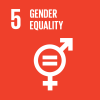
Undertake reforms to give women equal rights to economic resources, as well as access to ownership and control over land and other forms of property, financial services, inheritance and natural resources, in accordance with national laws
Indicator details
The indicator is conceptually clear, has an internationally established methodology and standards are available, but data is not regularly produced by countries.
Key dates:

